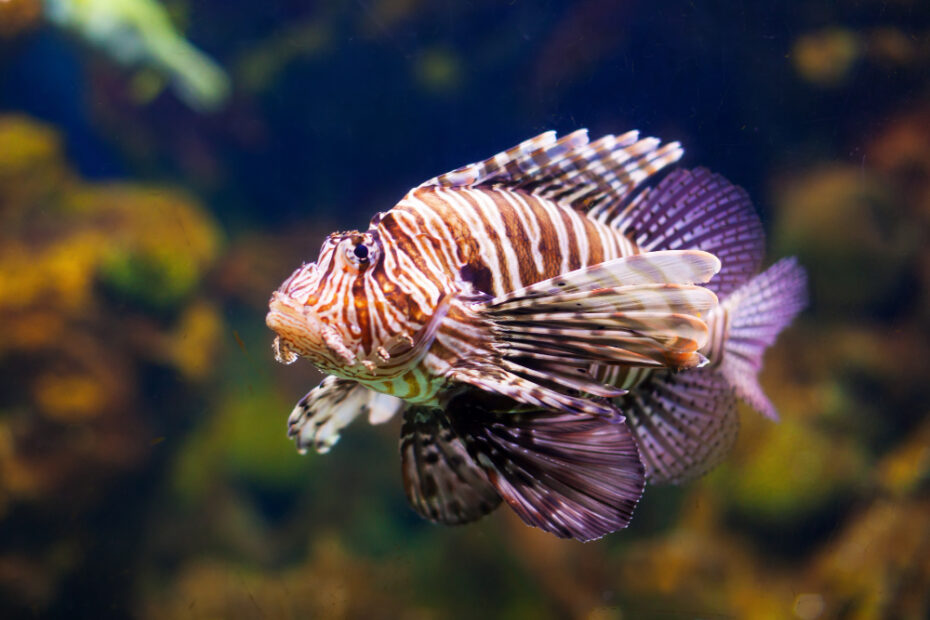The Red Lionfish (Pterois volitans) is a venomous marine fish known for its striking appearance and invasive spread in regions outside its native habitat. Here are some key points about this species:
- Appearance: The Red Lionfish is characterized by its zebra-like stripes of white or cream combined with red, maroon, or brown. It has long, venomous spines that protrude from its body, making it dangerous to potential predators.
- Size: They can grow up to 15 inches (38 cm) in length, though the average size is typically around 12 inches (30 cm).
- Habitat: Originally, Red Lionfish are native to the Indo-Pacific region, including the South Pacific and the Red Sea.
- Invasive Species: They have become an invasive species in the western Atlantic Ocean, Caribbean Sea, and the Gulf of Mexico. It’s believed they were introduced to these waters through the aquarium trade. Due to their voracious appetite, rapid reproduction rate, and lack of natural predators in these new environments, they have negatively impacted local fish populations and reef ecosystems.
- Behavior: Lionfish are predatory fish that feed on small fish and invertebrates. They use their feather-like pectoral fins to herd and corner their prey.
- Venom: Their dorsal spines contain venom. While a sting from a lionfish is rarely fatal to humans, it can be extremely painful and may cause nausea, fever, breathing difficulties, and other symptoms.
- Aquarium Care:
- Tank Size: A minimum tank size of 55 gallons is recommended for one lionfish, but larger is better.
- Diet: They are carnivorous, feeding on live or frozen fish and shrimp in captivity.
- Compatibility: Due to their predatory nature, care should be taken when choosing tankmates. Smaller fish might become prey.
- Safety: Given their venomous spines, caution is needed when handling or working in an aquarium with a lionfish.
- Conservation Concerns: Because of their invasive status in the Atlantic, many initiatives aim to control their population. One method is encouraging the consumption of lionfish as food, promoting a “if you can’t beat them, eat them” approach.
- Interesting Fact: Despite their menacing appearance and venomous spines, lionfish are generally not aggressive toward humans. Most stings occur when divers or aquarium hobbyists accidentally come into contact with the fish.
Whether in a home aquarium or seen while diving in the wild, the Red Lionfish is undeniably captivating. However, its impact as an invasive species underscores the importance of responsible aquarium trade practices and conservation awareness.

